Smart Money Concepts - Part 2: How to Trade Fair Value Gaps
Disclaimer: Nothing in this post should be taken as financial advice. Trading involves risk, and you are solely responsible for your own decisions and potential losses.
Introduction
This is part 2 in my Smart Money Concepts series. If you haven’t yet, I recommend reading part 1, as in this part, I am going to show you some possible ways to trade Fair Value Gaps (FVGs) based on what we have seen in the previous one. Keep in mind that these are not fully fledged trading strategies, but you can use them to develop and backtest your own strategies.
1. Use the pullback to enter
As we have seen earlier, price often tends to revisit or partially fill FVGs. We can use this opportunity to enter a trade along the market momentum (i.e. the direction of the Marubozus). You do not want to open right after the Marubozu(s) at a stretched price, because a correction is likely to follow, but instead place a limit order in the FVG to enter a trade at a better price. Let’s see a step-by-step example on EURUSD 1h at 9:00 2025-09-02.
1.1. Placing the limit order
In Figure 1 below, a nice FVG has formed after the price broke down to “unusual” price levels with a large Marubozu. We can draw the FVG as discussed earlier, and place a sell limit order (yellow line) inside it. The market has a strong bearish momentum, which we want to follow, so we want to short here. Whether you place the limit order at the top, middle or bottom of the FVG, depends on your concrete strategy.
Figure 1: Sell limit in the FVG
A more aggressive strategy would place it at the bottom. It would enter into trades more often at less favourable prices, while a conservative strategy placing at the top would catch much less pullbacks at much better prices. It is a matter of backtesting and optimisation to see which works best in the long run. Here, I placed the sell limit order in the middle for demonstration purposes. Let’s see what happens next.
1.2. Placing the Stop Loss and Take Profit orders
As you can see in Figure 2, the price wicked up to our limit order and now we are in position.
Figure 2: Setting the SL and TP
- You can set the Stop Loss at the top of the big Marubozu. If the price hits this level, we consider the setup failed, the market didn’t continue in the initial momentum.
- Set the Take Profit at the lowest point of the past candles. In this case we get a very nice Risk Reward (RR) ratio of 2.
Now we are all set, we just need to sit and wait. Get some popcorn. :)
Figure 3: Take Profit hit
It turned out to be a successful trade.
2. Trade the pullback itself
For me, this method was more intuitive than the previous one: if we expect the price to fill the FVG anyway, why not just trade it? I could have started with this, right? It can work too. Let’s see an example.
Look at that massive green candle that absolutely catapulted EURUSD to overbought territories at 16:00 22nd August 2025:
Figure 4: Massive FVG on EURUSD 1h
2.1. Opening stop and closing limit orders
We can short this FVG by setting a Sell Stop order at the top of the FVG and a Buy Limit at the bottom:
Figure 5: Sell Stop was hit
2.2. Placing the Stop Loss
As you can see in Figure 5, our Sell Stop order (depicted by the yellow line) was hit and now we are in position.
- In 2.1. we have already placed a
Buy Limitorder at the bottom of the FVG which will act as ourTake Profit - Let’s set the
Stop Lossat the highest point of the past candles. This gives us a juicyRR of 3, seeFigure 6below:
Figure 6: Stop Loss and Take Profit placement
Let’s see how the trade would have played out:
Figure 7: Short Take Profit hit
As you can see, it hit our Take Profit quite convincingly.
3. Combine the previous two techniques
You can also combine the previous two techniques:
- Ride the short position down
- When it hits the TP, reverse your position, and follow the market momentum upwards
Let’s continue our previous example by opening a long position at the bottom of the FVG:
Figure 8: Reversing the position into long
As described in Use the pullback to enter,
- I placed the
Stop Lossat bottom of the large Marubozu - And the
Take Profitat thehighest point after the Marubozu - This gives me a dream-like
RR of 6
Let’s see what happens next:
Figure 9: Stop Loss hit
Oops, that didn’t go so well. Had I not been so greedy, a nice 2-RR Take Profit would have been hit, but this time there was not enough strength in the market to hit my 6 RR dream target. It is important to note a couple of things here.
- Losing trades are part of the game. A good trader is able to win more than they lose in the long run. (see 4. below for more details)
- In trading the math is different from what most people are used to. Instead of
2 + 2 = 4, you’ll have6 - 2 = 4(and hopefully not2 - 6 = -4). - There is
no Holy Grailin trading, andSMCandFVGsneither are. The point is to improve your chances of winning. - The previous points were quite clichéd, so congrats if you are still with me. You deserve a real practical one: A
large RRis not necessarily a problem. What matters is the combination of youraverage RRandwin percentage. For example, if you aim at anRR of 6and win20%of the time, the expectancy is0.2 * 6 = 1.2. This means that, on average, you earn 1.2 units for every 1 unit you risk. That’s excellent! But this also means, that four out of five trades lose, and only one wins. - Your net profit/loss after the two trades is still
+2(+3units from the short and-1unit from the long), exactly what I wrote in 2.
4. Trading economic news
As we have seen in the previous post, we need volatility to trade. What can create more volatility (and thus FVGs) than clearly bullish/bearish news?
A good example for such economic news is the Nonfarm Payrolls (NFP) which delivers information about the US labour market and considered an important indicator of the US economy by many traders/investors. It is dropped on the first Friday of each month at 8:30 am Eastern Time.
4.1. Example: Nonfarm Payrolls 3rd July, 14:30 CEST
When strong economic news shake the market, things can happen really quickly, therefore we go down to the 5 minutes timeframe.
Figure 10: FVG following the NFP
As you can see in Figure 10, the NFP created a perfect setup for us. One single Marubozu with a large body, driving the price down to levels not seen for a long time. As always, we expect the price to fill in the gap, but it is advisable to wait for 10 minutes (2 candles as a rule of thumb) before entering a position. This is to allow the emotions to settle a bit and to let impatient traders get chopped up in both directions. >:) You don’t want to be one of them. Then let’s place a Buy Stop order at the bottom of the FVG, and a Sell Limit at the top:
Figure 11: Entering a long position
I set the Stop Loss as described previously. It gives me an RR of 1.78. If you want a higher RR, you can set your SL for example at the bottom wick of the previous green candle at 1.359. That would give you a nice 2.25 RR. Now let’s see how the trade would have played out:
Figure 12: Take Profit hit
A nice convincing win. It didn’t give us much to worry about.
Outroduction
That concludes part 2 about Fair Value Gaps. In this part, I have shown different techniques to trade FVGs:
- Waiting for the pull back to enter at more favourable prices.
- Trading the pullback itself.
- Combining the two above and trading both directions.
- Watching economic news that can give you opportunities to trade FVGs.
Feel free to experiment with these and combine them with your favourite indicators to develop your own FVG based strategies. In the next post, I will discuss another Smart Money Concept, which is in fact one of my favourites: Order Blocks. Stay tuned!
Glossary
- FVG: Fair Value Gap
- NFP: Nonfarm Payrolls
- RR: Risk Reward (ratio)
- SL: Stop Loss (order)
- TP: Take Profit (order)
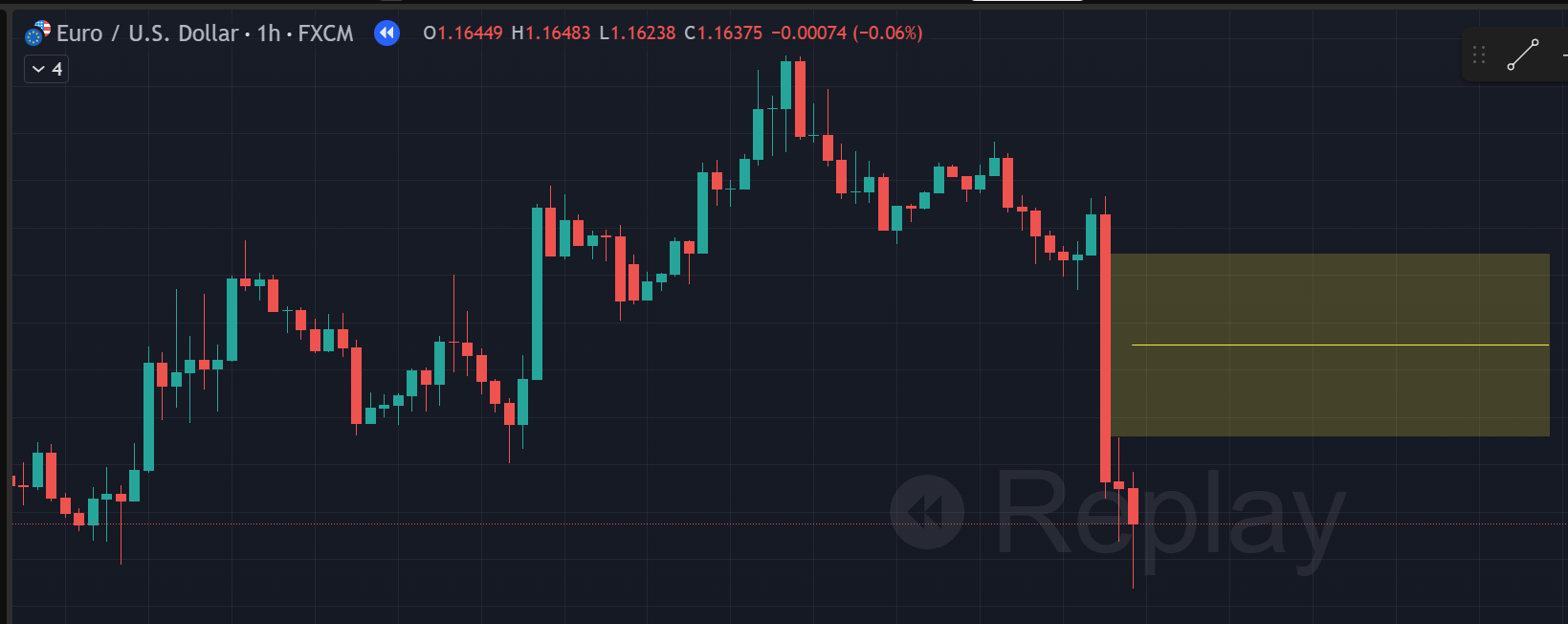
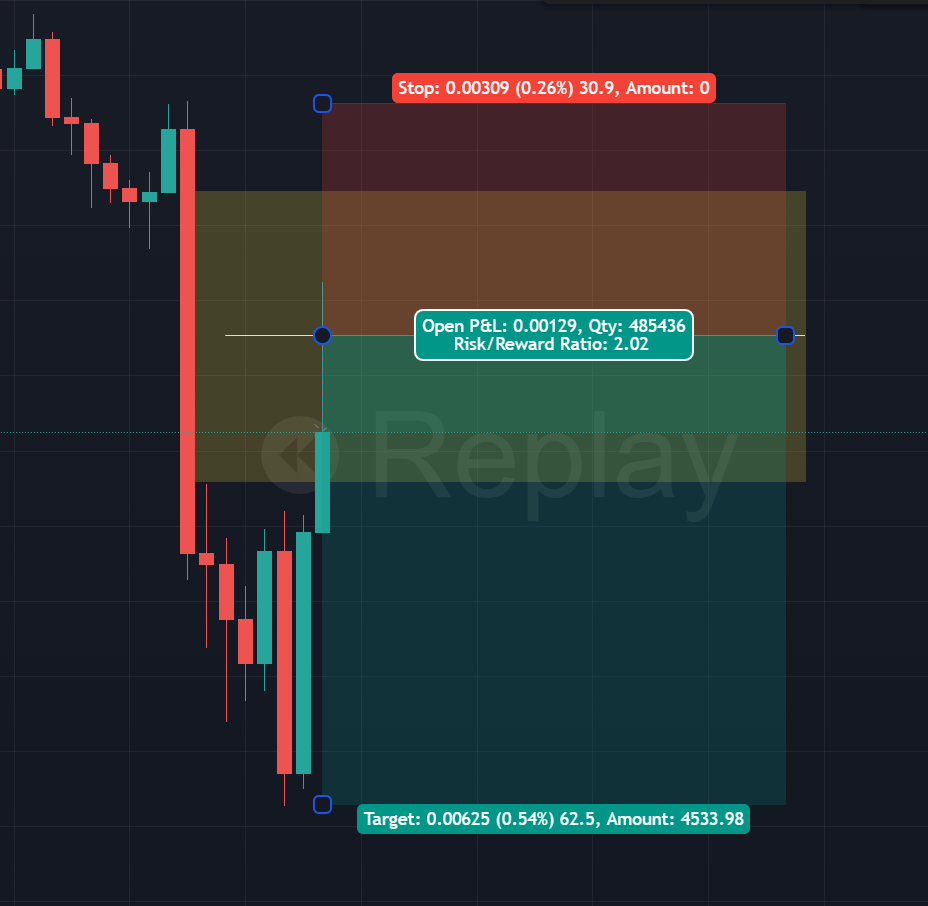
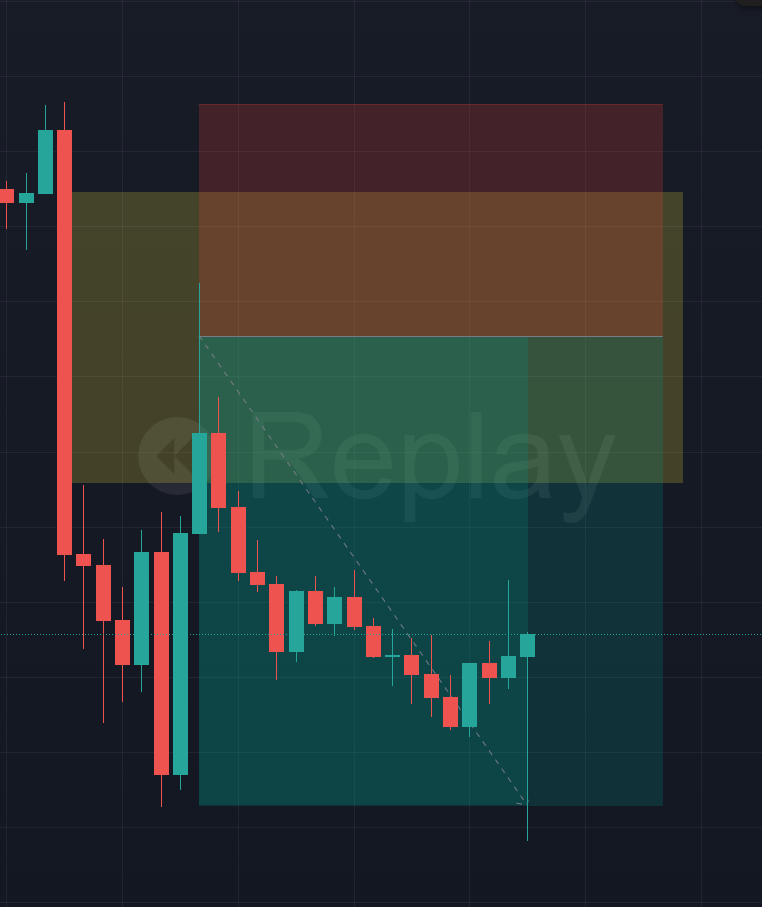
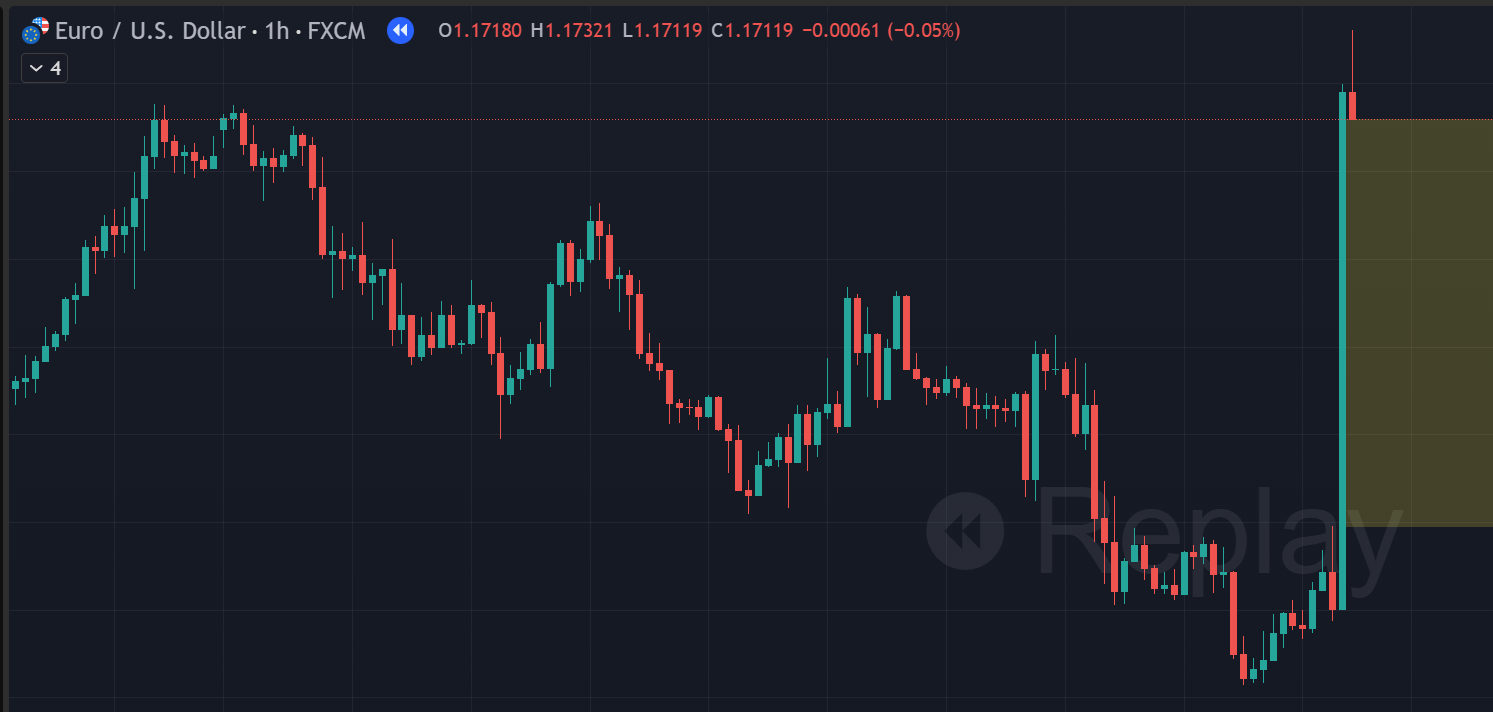
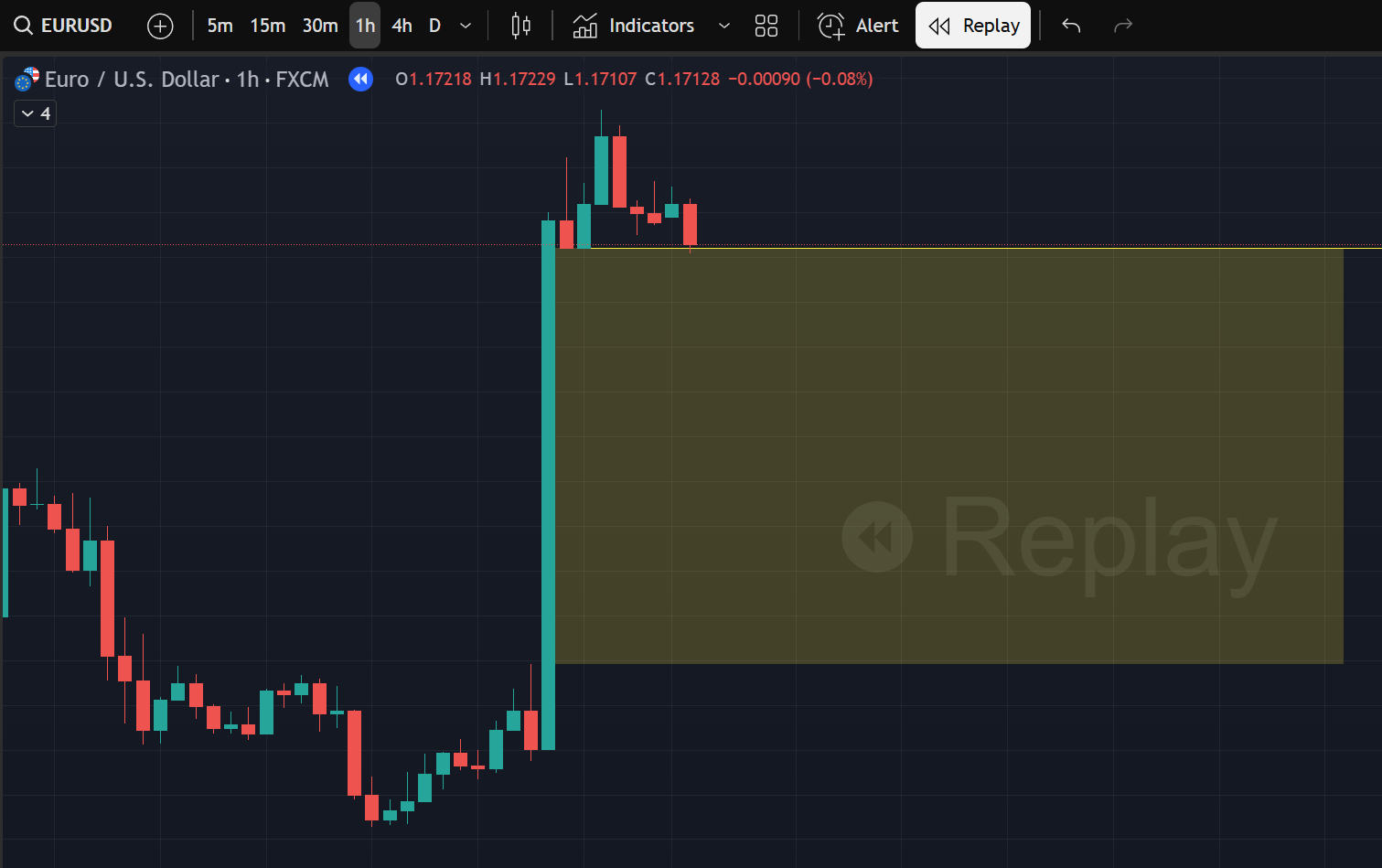
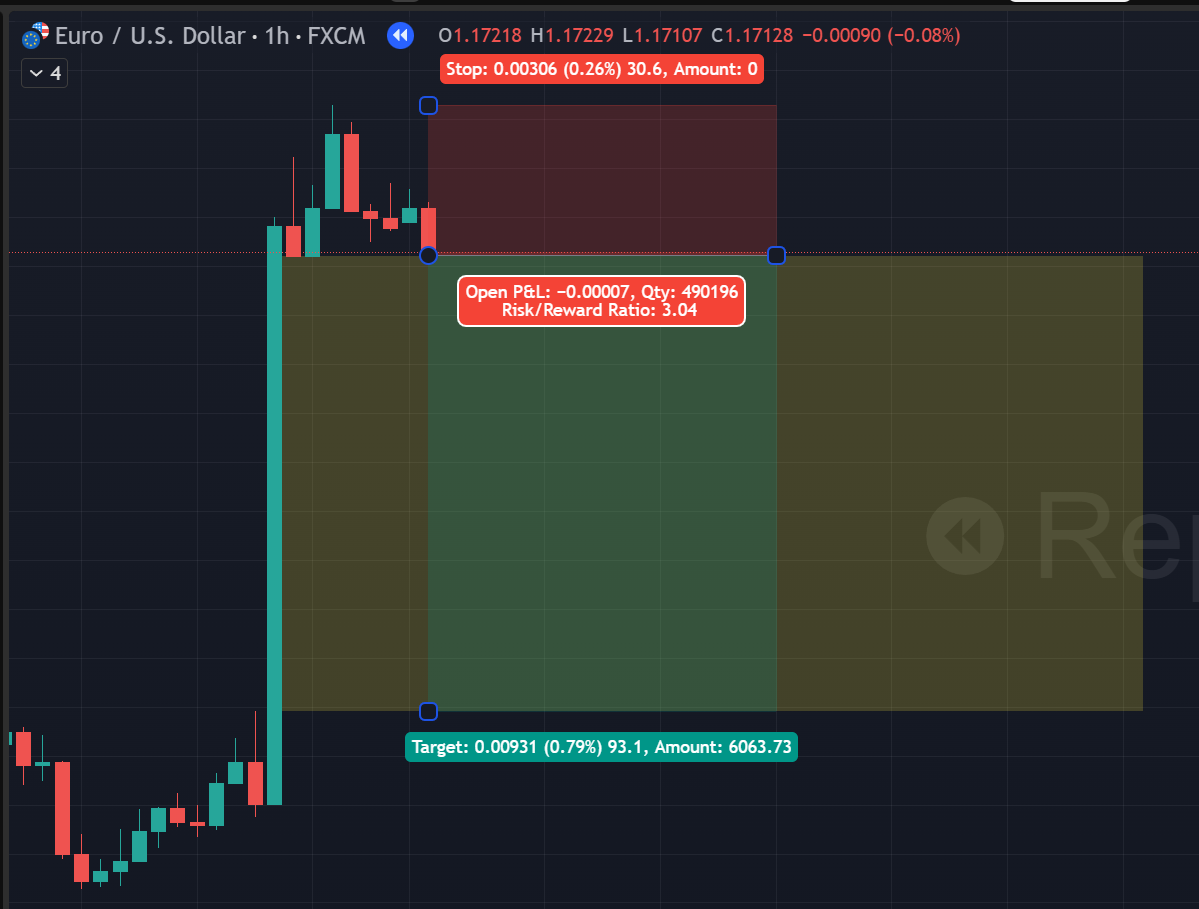
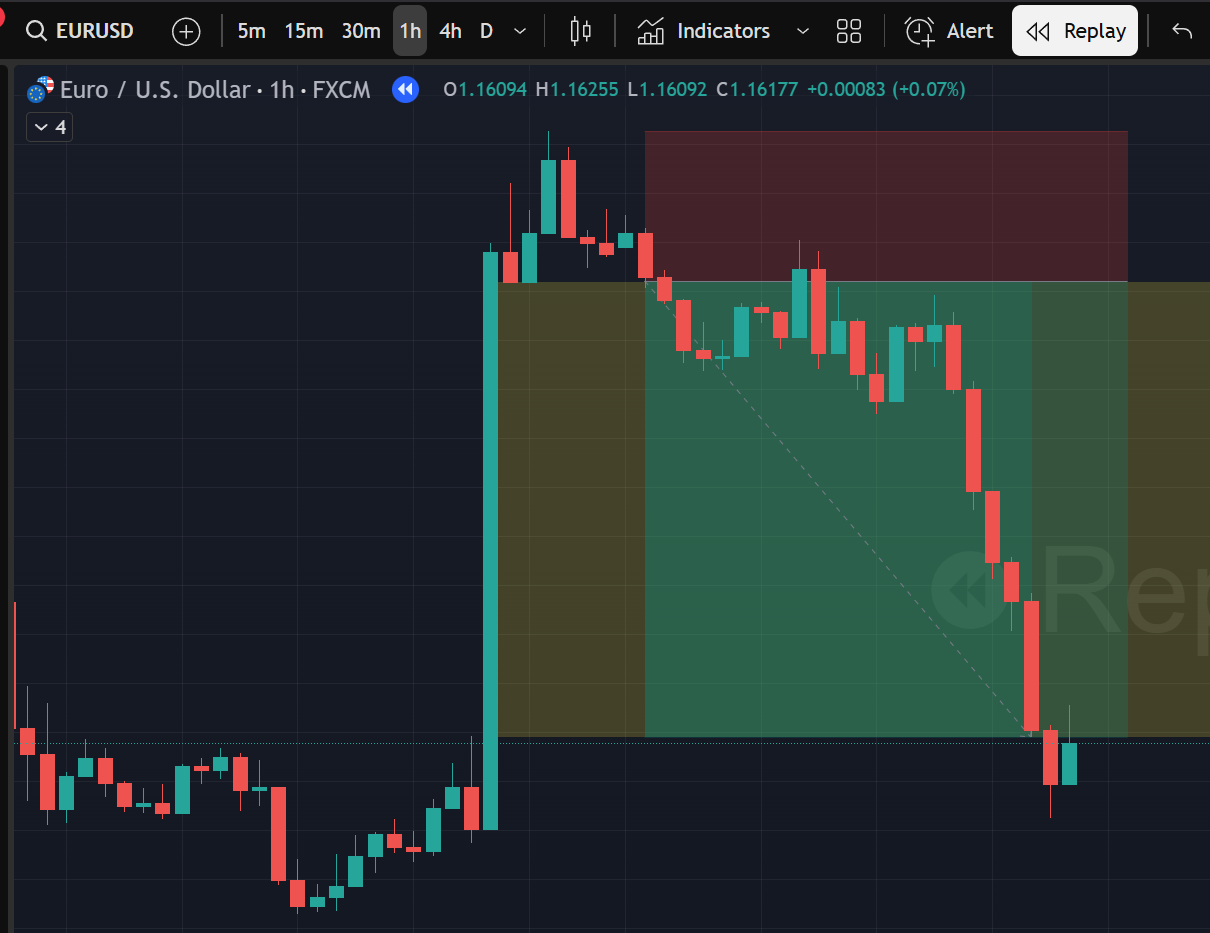
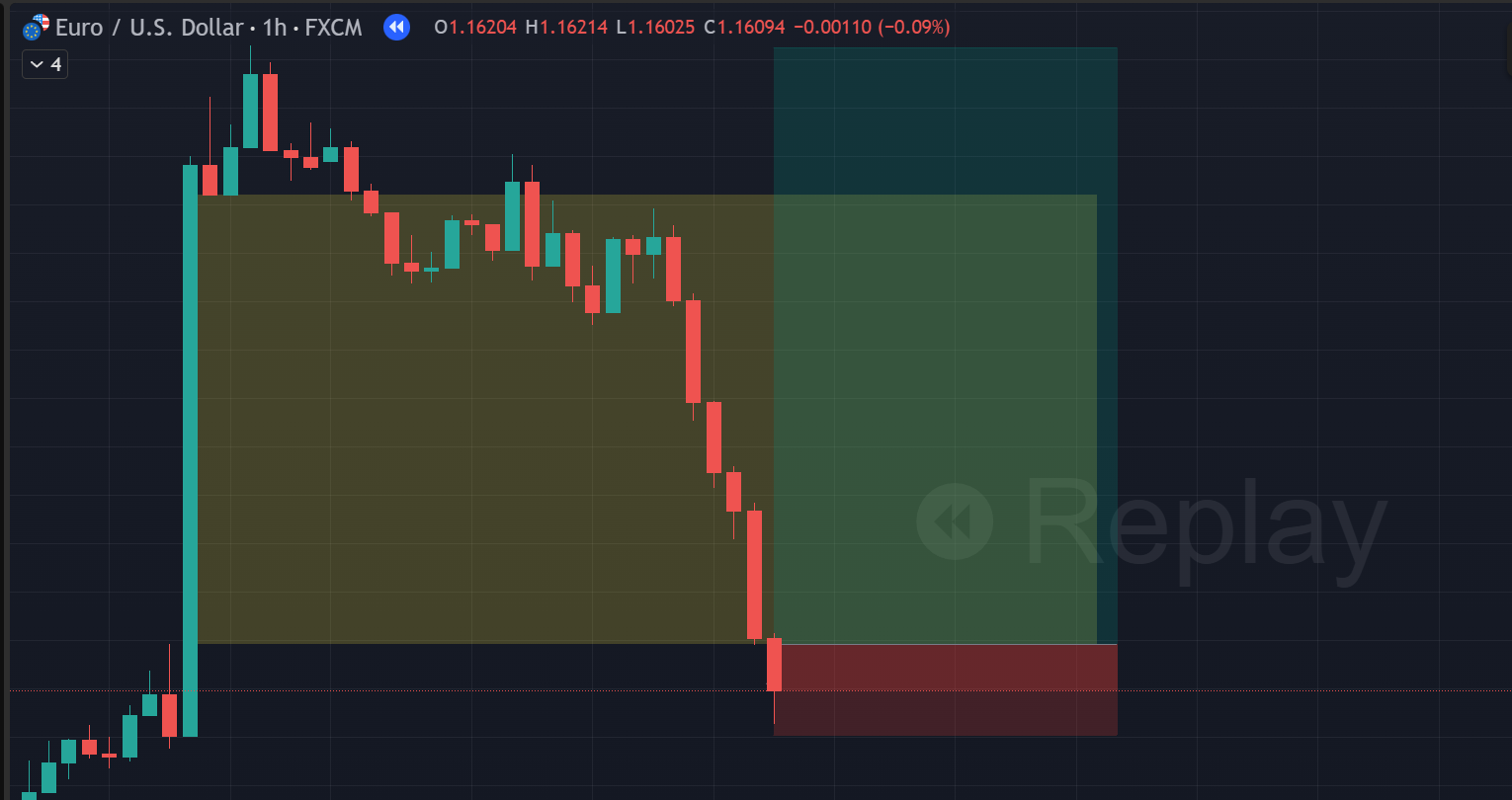
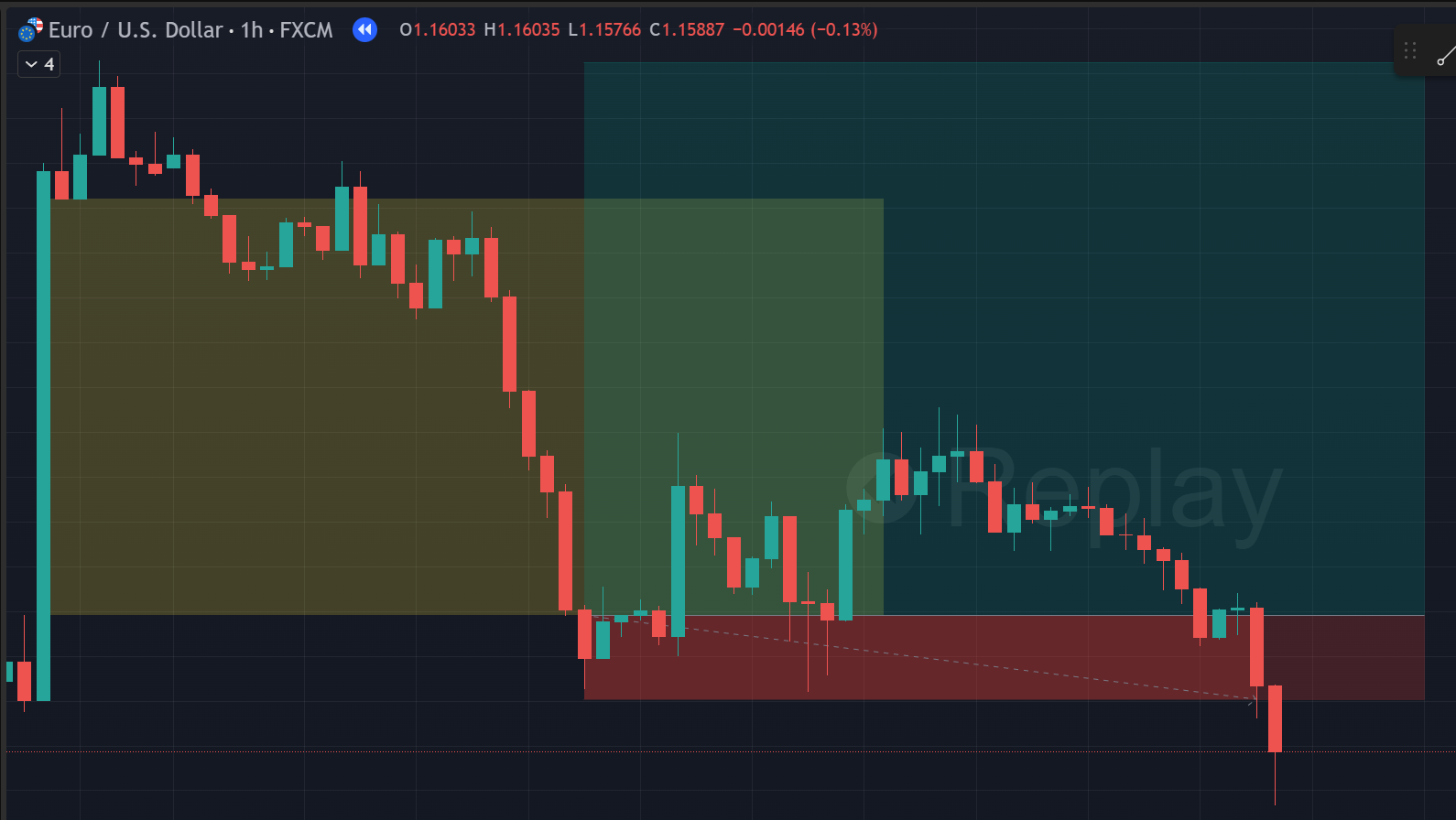
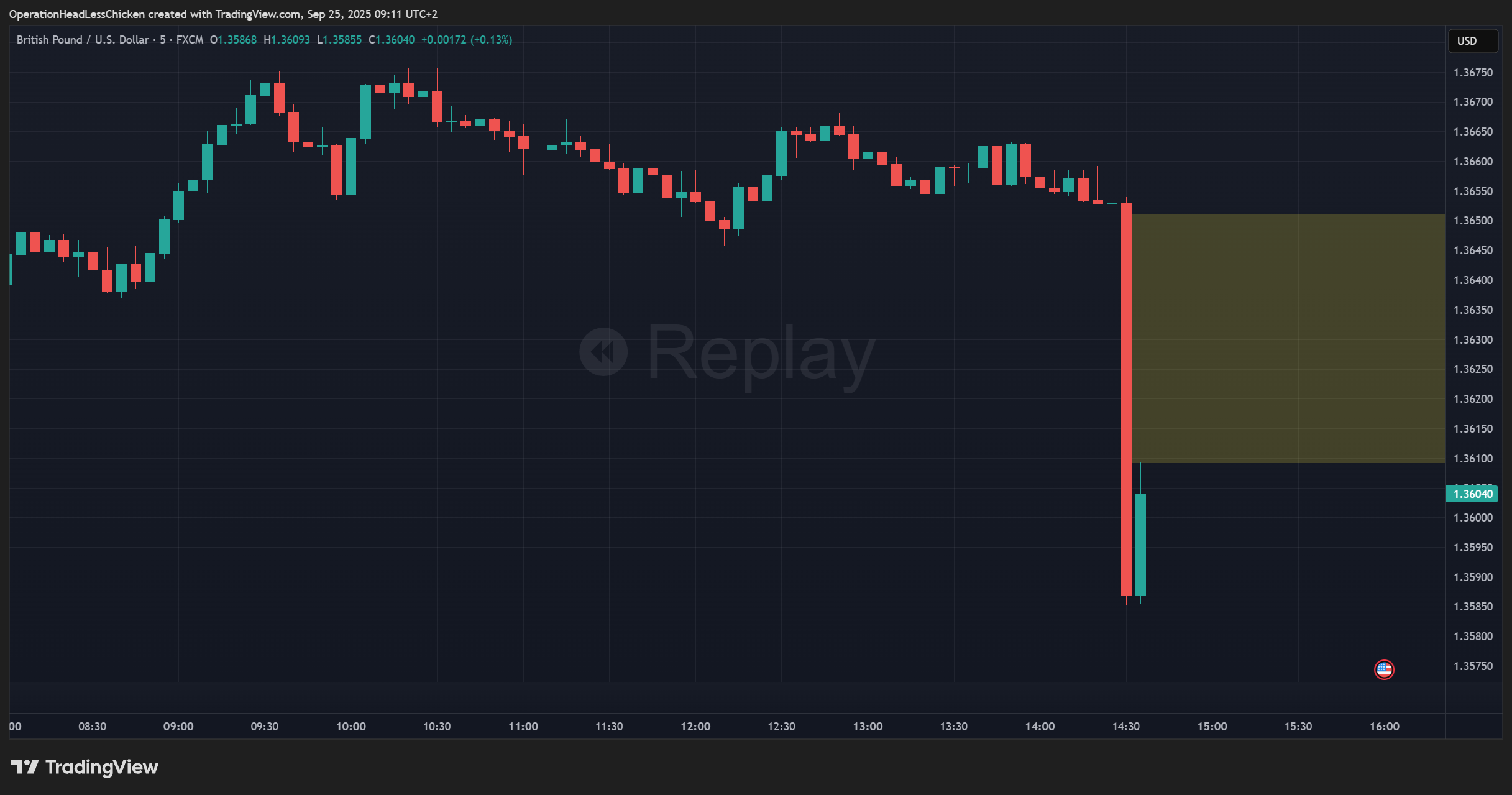
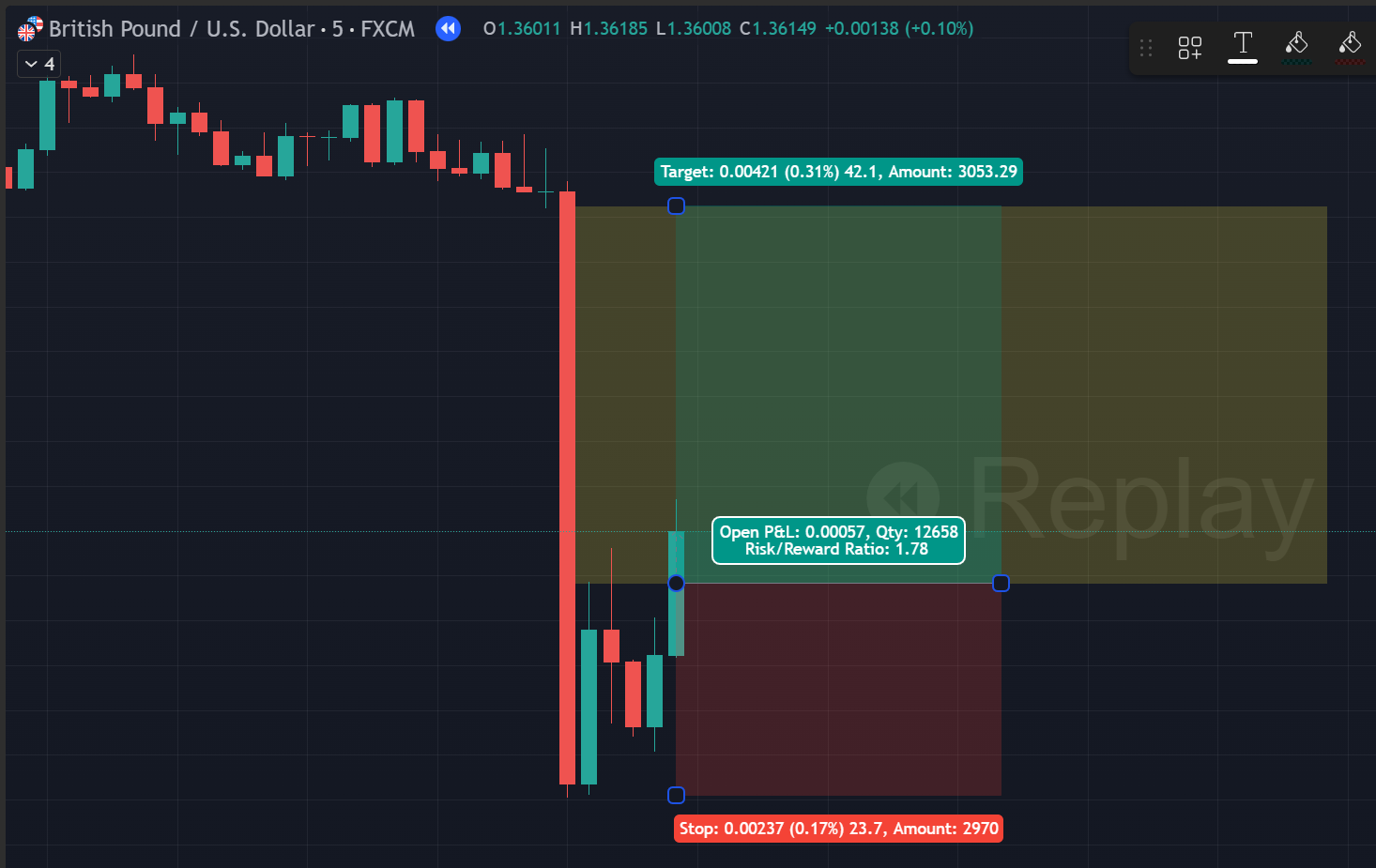
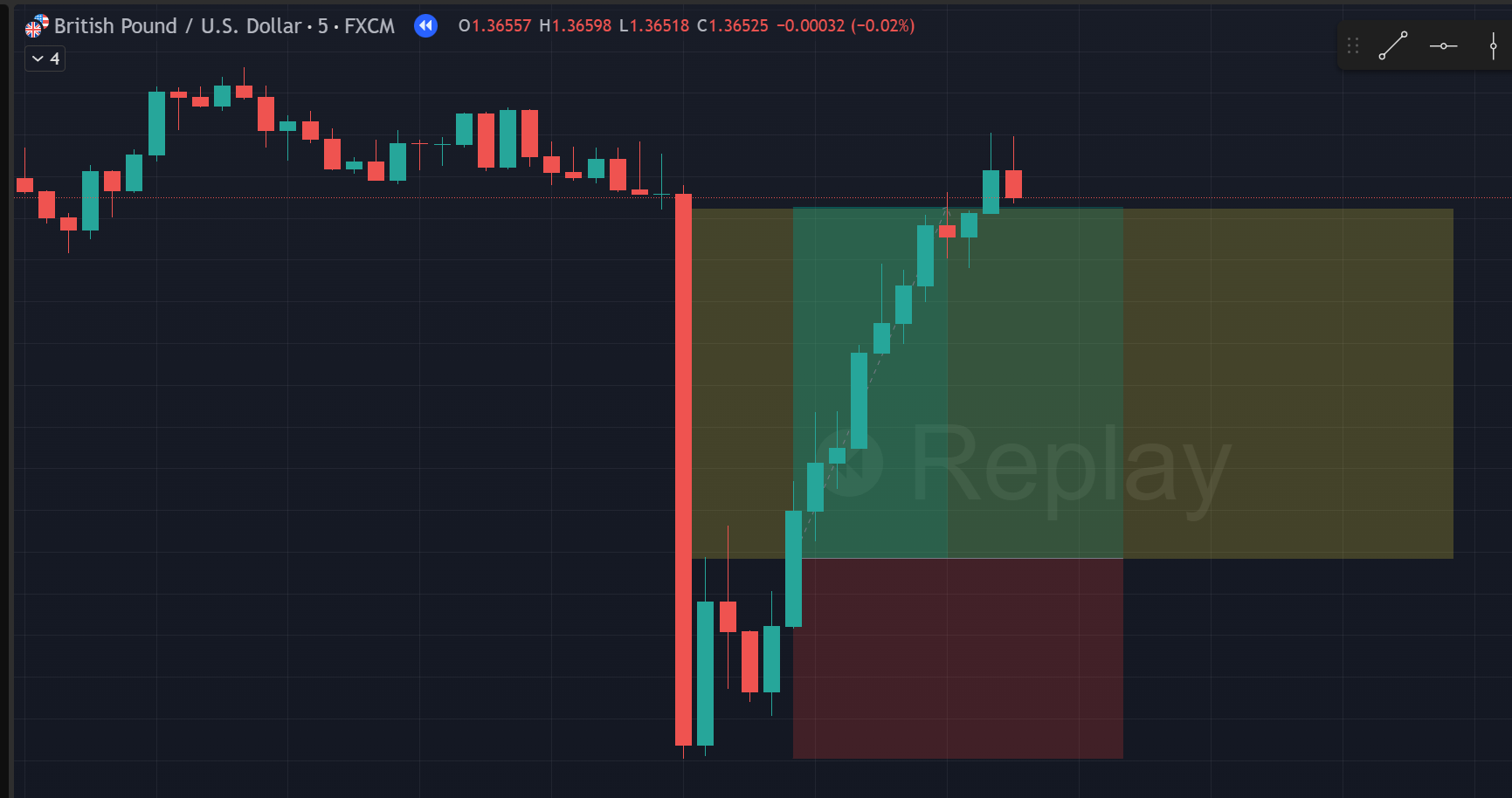
Comments